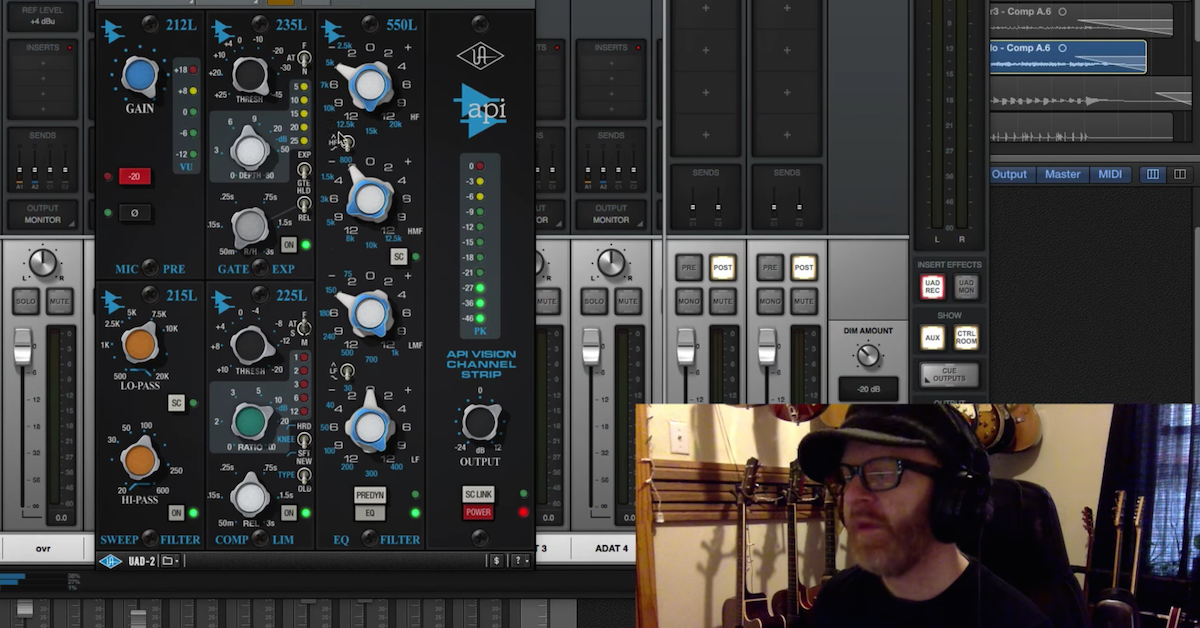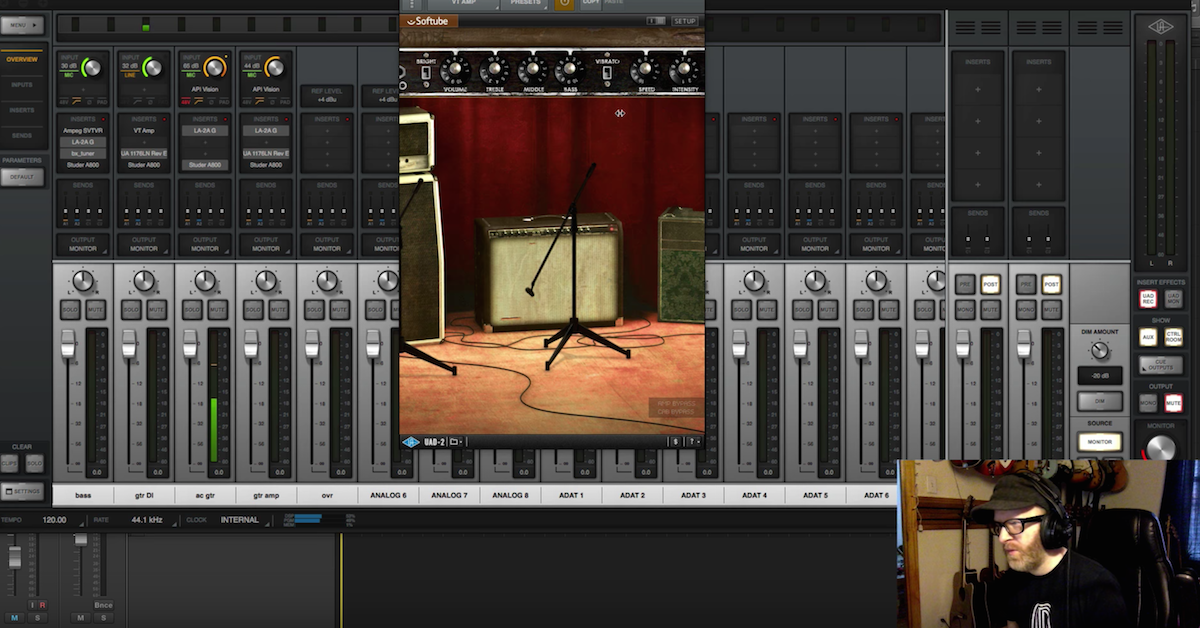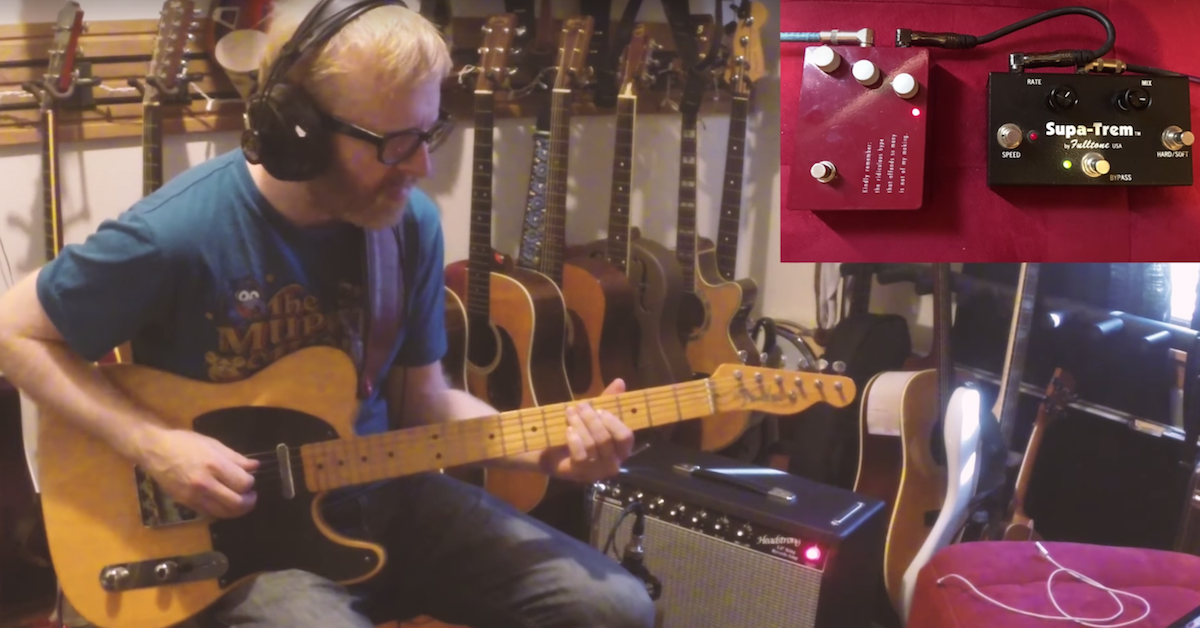Mark Marshall’s Best Audio Gear of 2016
Article Content
In 2016, I produced some records and composed a lot of music for TV programs. And I’ve also tried a lot of gear in 2016. Eventually, the luster wears off and you start choosing things based on what makes sense for your style of work.
Ozone 7
Because of the nature of producing music for TV, there isn’t time or a budget for a real mastering engineer. This means it’s a DIY situation.
Ozone 7 makes it fast and easy for me to get a great sounding master. It’s a major step up from my previous technique of adding my own bus compressors and EQ’s. Now, I use Ozone 7 everyday.
Does Ozone 7 make mastering engineers obsolete? No way!! For me, nothing beats Alan Silverman at Arf! Mastering. Whenever I produce an album, I have Alan master it; however, when a real mastering engineer isn’t an option, I use Ozone 7.
Effectrode PC-2A
I mentioned in other articles that I use some guitar pedals in front of amp sims. The Effectrode PC-2A is what I use when I want a clean, vintage tone.
It has an actual tube in it and adds some gentle saturation to the signal. It not only makes the amp sim feel more tube-like, but it improves the tone greatly. I don’t compress a lot, just a little. It’s mostly about the color (unless I’m playing slide, in which case, I’ll add more compression).
Empress Heavy
Some amp sims can do heavy tones, but I still prefer to mix a mild overdriven amp sim with the Empress Heavy. For one, I find that the built-in gate sounds better. It’s pretty easy to dial in a heavy tone to the point that, I don’t need to tweak it later. It’s also a very quiet pedal. I just prefer the tone overall.
The UAD Family
This year, I used a handful of UAD plugins all the time: The 1176, LA-2A, Fairchild, API EQ’s, API Vision Channel Strip, EMT 140, Studer A800, and the Helios 69. I also sometimes used a Pultec EQ on pianos and drums. And recently, I’ve been using the Tube-Tech CL 1B on vocals.
I’m pretty dependent on these plugins now. I’d rather have a small, curated selection of plugins instead of an endless menu of options.
Fabfilter
Fabfilter is my main, non-UAD EQ. It’s fabulous. Whenever I need to do some surgical EQ, it’s my first choice. The GUI is great and the plugin doesn’t offensively color the tone, unlike Pro Tools’ EQ’s.
Seriously, I can’t stand the sound of the EQ3. I can always hear it when someone adds it to the mix of a song I’ve produced. Instant gag reflex.
Omnisphere 2
If there’s one software synth you should own, it’s Omnisphere. There isn’t much you can’t do with it. Plus, it takes almost no work to get great sounds. There are so many great presets you won’t even need to tweak them.
But if you are into tweaking, you can take a long, creative journey with Omnisphere. It’s very deep. Chances are, you’ve already heard it, since it’s a common tool for film composition.
EZ Drummer 2
I use EZDrummer pretty much everyday. It’s a staple for my TV productions because it’s quick to setup and it’s easy to get great sounds. The GUI is very well-designed so you can get drum parts up and running very quickly. The extended libraries are great, too. Lately, I’ve been addicted to Big Rock Drums.
Octapad
I play my own parts into EZDrummer using a Roland Octapad 8 SPD-30. I’ve experimented with a lot of ways (and devices) for tapping in rhythms, and a drumstick in my hand still feels best. (I’m an experienced session drummer.) You don’t have to be a pro drummer, though. The velocity tracking is just more realistic on the Octapad. So, even if you still need to quantize, using a real drum pad will humanize your programmed drums.
Strymon Big Sky
I’ve been using the Strymon Big Sky for far more than just a guitar pedal. When it’s not on my pedalboard, I keep it setup with my Apollo and reamp box. Not only do I love the reverbs, I love the ambient effects, too.
I can run various instruments through the swell verb. I also like the infinite sustain and freeze options. It’s fun to send piano to the freeze option to create textures. There are just some things plugins can’t do.
Logic Pro X
I’ve used a lot of software. I currently use Pro Tools, Ableton Live, and Logic Pro, but I’ve gone back to using Logic. It’s mainly because of the compositional work I’m doing. Though I don’t prefer the way it records audio, it deals with software instruments in a way that’s far superior to Pro Tools.
EastWest Libraries
I have a monthly subscription to EastWest’s sample libraries. There are quite a few sample collections to choose from with ComposerCloud. I use them for a fair amount of compositions. It takes some time to dig in, and it can feel overwhelming at first. But, once you become familiar with it, you can make some very realistic scores.
Retroland
In 2016, I really got back into the 80’s. Due to space limitations in my Brooklyn apartment studio, I couldn’t fit a bunch of analog keyboards and drum machines. This led me to a few really great plugins.
The TAL-U-NO-LX is a plugin version of a Juno 60. They’ve done a pretty great job at getting that analog warmth to come through.
For 80’s drum sounds I use the Aly James Lab VPROM, a sampling of the original LINN drum machine. So, if you’re a fan of the 80’s drum sounds, this is a must-have. Beyond that, it’s a great tool to layer with other drums in modern productions.
Plogue sampled all the sounds from the early Atari and Nintendo consoles. It’s immediate nostalgia when opening the chipsounds plugin. I use this plugin for most of my 8-bit productions. Growing up with the Nintendo NES and Atari 2600, it tickles my funny bone. They’ve done a great job at designing the GUI as well.
Label Maker
This seems like a silly mention, but I use a label maker a lot. It saves me a lot of frustration. Think of all the things you have to plug in: wall warts and all kinds of cables that go in every direction.
I’ll label every cable at each end. This way, no matter which end I have to search for, its identity is clear.
This is crucial with power supplies for guitar pedal because plugging an 18V power supply into a 9V pedal can fry your pedal. Don’t assume you’ll always remember in the heat of battle.
I place a label on the power supply stating what pedal it belongs to. Near the tip of the power supply, I write whether it’s 9V, 12V or 18V.
Well, there you have it. Those are my 2016 MVP’s. What are yours?




